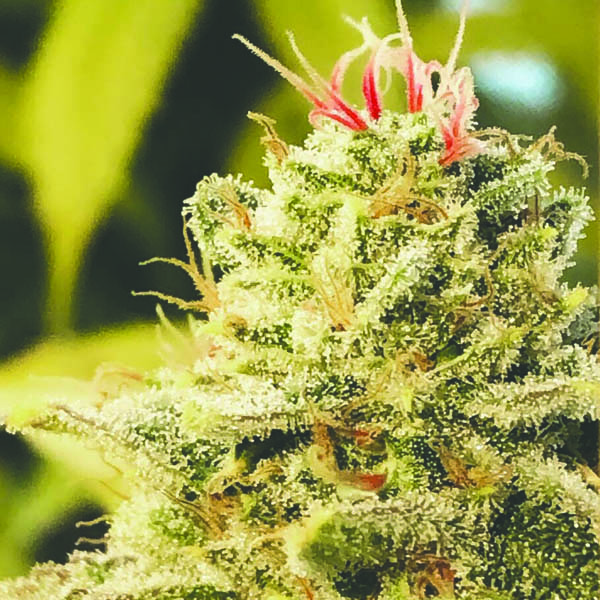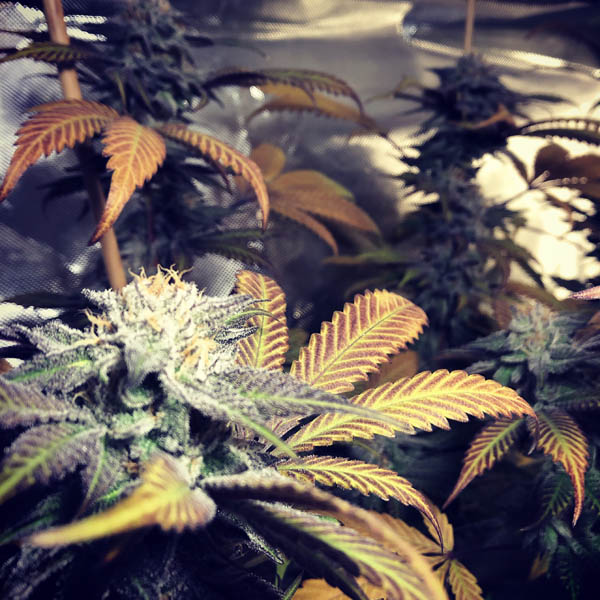Lessons from local growers and cannabis-enthusiasts
Green thumb or not, many Islanders may try their hand at gardening this year. For the first time in almost a century Canadians can legally grow cannabis on their property without the need of a license. Under the Cannabis Act, adults are permitted to grow up to four plants per household.
To understand the basics of growing in our climate, I spoke with some cannabis-enthusiasts while visiting Grow Daddy, a local supplier of indoor and hydroponic growing equipment in Stratford. Hunter Kerr, online operations manager at Grow Daddy; Shawn Harnden, growing expert at Grow Daddy and owner of PEI Cannabis Solutions; and Mark Geddes, lead extraction technician at Dosecann Cannabis Solutions; as well as a few informed customers who happened to pop in during my visit, all shared their experiences in fine-tuning their growing skills.
Before we get into the nitty gritty, a side note—if you have an interest in growing anything, Grow Daddy is worth a visit; they have a lot of sophisticated equipment not readily available elsewhere. As a vegetable grower myself, one of the most exciting parts about legalization has been listening to experienced growers openly share their knowledge, because they are meticulous when it comes to monitoring growth to maximize yield. On that note, let’s dig in:
Plant Outdoors if Possible
When selecting a strain of cannabis for PEI, two important qualities to look for are early flowering time and a resistance to mold and mildew. While growing indoors will give you more control over nutrient content, temperature, and light intensity, growing outdoors is far more affordable. Planting directly in the ground can also generate higher yields. Whether growing indoors or out, take precautions to ensure the safety and security of your plants.
Start Your Seeds Now
For outdoor production, it’s best to start plants indoors in March or April. There are a number of one- or two-part organic fertilizers available to feed seedlings, just make sure you’re selecting one intended for the vegetative stage. If using city water, let it stand for 24 hours to allow chlorine to evaporate before watering. After the risk of frost, transplants can be moved outdoors into 3′ x 3′ holes filled with a rich, organic growing medium. Recommended additives include kelp meal, earthworm castings, bone meal, and oyster shells. Ideally, the pH of your soil should be between 6.5 to 6.8.
Maintain Good Airflow
When choosing a location for your plants, an area that provides full sun and has good airflow is preferred. It’s also recommended you prune plants during the flowering stage by removing interior leaves to increase air flow and reduce the risk of mold. For indoor production, increasing air flow can also be used to deter airborne insects from landing on plant leaves.
Manage Pests and Disease Organically
Common pests include thrips and spider mites. Several growers listed beneficial insects such as
A. cucumeris as their go-to pest control. Other strategies include: spraying 3% hydrogen peroxide on the soil surface for three consecutive days to break the life cycle of soil bound larvae, covering the bottom of pots with felt and the soil surface with sand to reduce the area where eggs are laid, and using yellow sticky traps. Powdery mildew can also be a problem, especially when growing indoors, but is easily avoided with proper humidity and temperature control. All growers I spoke with cautioned against using any harsh pesticides or fungicides, especially anything containing myclobutanil which has been banned in Canada.

A cannabis flower covered in crystal-like trichomes Photo credit: Shawn Harnden
Harvest Based on the Trichomes
The best way to determine if flowers are ready to harvest is to wait for the trichomes—tiny crystal-like glands that cover flower buds—to mature. This is usually marked by a change in coloration from translucent to cloudy-white or amber. A jeweler’s loupe or magnifying glass is helpful in determining this since trichomes are quite small. If possible, harvest flower buds in stages as the trichomes mature, rather than cutting the entire plant at once.
Maintain 60/60 when Curing
The most important part in curing your cannabis is to maintain the environment at 60 percent humidity and 60° F (15.6° C). This can be done in a jar or by hanging plants in an enclosed space. Ideally, flower buds should be dried to the point of being crispy on the outside but remaining sticky on the inside. Once you’ve achieved this, they’re ready for consumption or to create edible products. If you’re planning to create edible products, Grow Daddy also carries some equipment that can make this process foolproof, such as the Magic Butter Maker and the Levo 2.
For more information check out, “The Grower’s Handbook” by David Robinson, or contact PEI Cannabis Solutions for a consultation.
- THERE’S NO TASTE LIKE HOME - November 1, 2019
- TIPS FOR GROWING CANNABIS - April 1, 2019
- FEMALE-LED FARMS ON THE RISE - March 1, 2019
- EATING WITH ALL YOUR SENSES - February 1, 2019
- LOVE COFFEE AND PEI? THIS BREW’S FOR YOU - January 1, 2019
- RISE OF A NEW SETTING DAY - May 1, 2018
- THE LOST LINK IN AGRICULTURE - March 31, 2018
- BEYOND TOURISM - March 1, 2018


